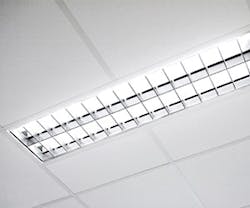Dated Light Fixtures May Pose Toxic Risk
If your fluorescent lighting fixtures are older than 1979, you could be exposing your occupants to unnecessary levels of polychlorinated biphenyls (PCBs).
This toxic substance may cause cancer and has been shown to cause a number of serious health effects in animals, including effects on the immune, reproductive, nervous, and endocrine systems.
Many older ballasts can leak when they fail, leading to elevated levels of PCBs. More than 150 incidents of leaking or smoking ballasts have been reported to the EPA from New York and New Jersey schools over the past 15 months.
Because people can be exposed to PCBs by breathing contaminated air or by touching materials, leaking ballasts must be removed and properly disposed of along with any part of the fixture that has come in contact with PCBs.
As part of a lighting upgrade or stand-alone project, removal of these potentially toxic light ballasts offers more than indoor environmental quality benefits. According to the EPA, a complete lighting retrofit not only eliminates the PCBs hazard, but also increases energy efficiency by 30-50%.
If you suspect your facility could be at risk, the EPA offers several resources on its ENERGY STAR website. This includes PCB-Containing Fluorescent Light Ballasts (FLBs) in School Buildings: A Guide for School Administrators and Maintenance Personnel, which provides detailed information on potential savings and funding options.
